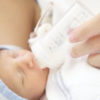From the American Academy of Pediatrics:
New COVID-19 guidance from the Centers for Disease Control and Prevention (CDC) outlines when communities and families should wear face masks.
Even in areas where mask guidelines are now eased, we realize some families may find it difficult to decide what’s best for everyone.
For some children—including those too young to be immunized and many with special health care needs—masking is still an important layer of protection.
Who still needs to wear masks?
Universal mask policies are still necessary in many parts of the country. Decisions about masks are made locally and are based on new guidance from the CDC. All three of these conditions should be met before a community relaxes rules on masking:
- low COVID-19 case rates
- low hospital admission rates
- adequate hospital capacity
Make a mask plan that works best for your family
There may be times when your family is around groups of people who are and aren’t wearing masks. Having a family plan about masks will help your child or teen know what to expect.
Parents can help their kids understand that there are many reasons why adults and children may continue wearing face masks in public indoor settings. For example, students, teachers or school staff may choose to continue wearing face masks in school settings, even if not required. Children with special health care needs may rely on masks for protection, so they do not have to miss school or other activities — especially if others around them do not wear masks.
Masking also helps cocoon children who are too young to be vaccinated. Masks can also protect kids who have weakened immune systems that put them at higher risk of serious illness from COVID-19. That’s why preschools and childcare centers may have different guidelines about mask wearing indoors. Be sure to check with officials in those places.
The American Academy of Pediatrics (AAP) offers these suggestions for families deciding who should wear a mask. To protect children who are too young to wear a mask (under age 2) or be vaccinated (kids under age 5), the rest of your household may consider wearing masks when in public settings. Masks also are encouraged to be worn if:
- your child or teen is immunocompromised and may not have a protective immune response to the COVID-19 vaccine, or is at high risk for severe COVID-19 illness
- your child or teen is not yet immunized
- other members of the family are at higher risk of severe disease or are not immunized or
- the community has “high” COVID-19 transmission
Family members who live in the same household do not need to wear masks when they are alone together. But if you are vaccinated and your children are not, you can choose to model mask-wearing behavior in support of your children when you are all out together. For example, everyone can wear masks for a trip to the grocery store.
Remember
The pandemic continues to impact families in many different ways. As a parent, model empathy toward others. Discourage bullying of children who choose to wear a mask to protect themselves and their family even if they are not required.
Pediatricians strongly recommend every eligible child receive the vaccine. New data may suggest waning efficacy of the vaccine in preventing mild infection from the omicron variant in children ages 5 to 11. However, the vaccine remains effective in protecting children from severe illness and hospitalization. And without the added layer of protection from the COVID vaccine for kids under age 5, masks are still an important way to protect our loved ones.

